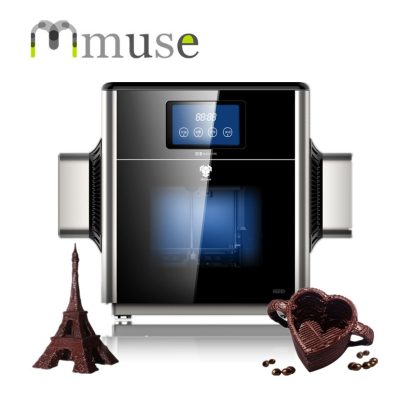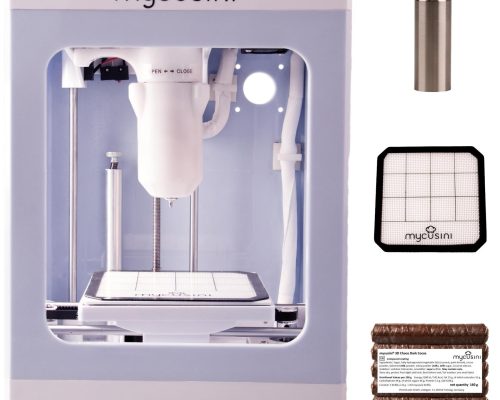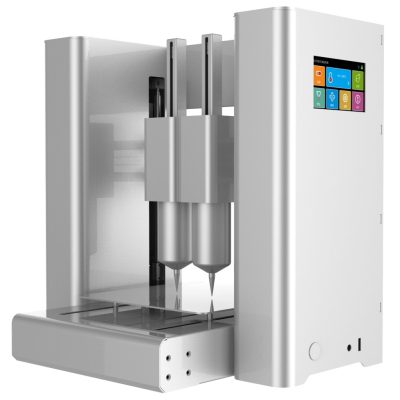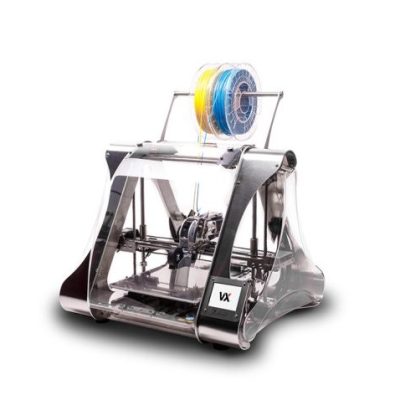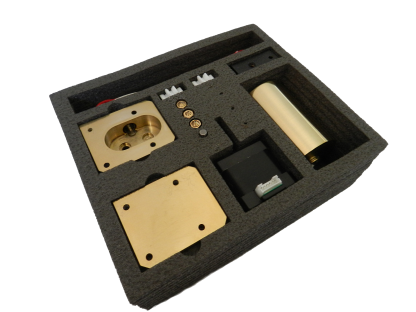- Last Updated: January 12, 2024
-
 Pat Nathaniel
Pat Nathaniel
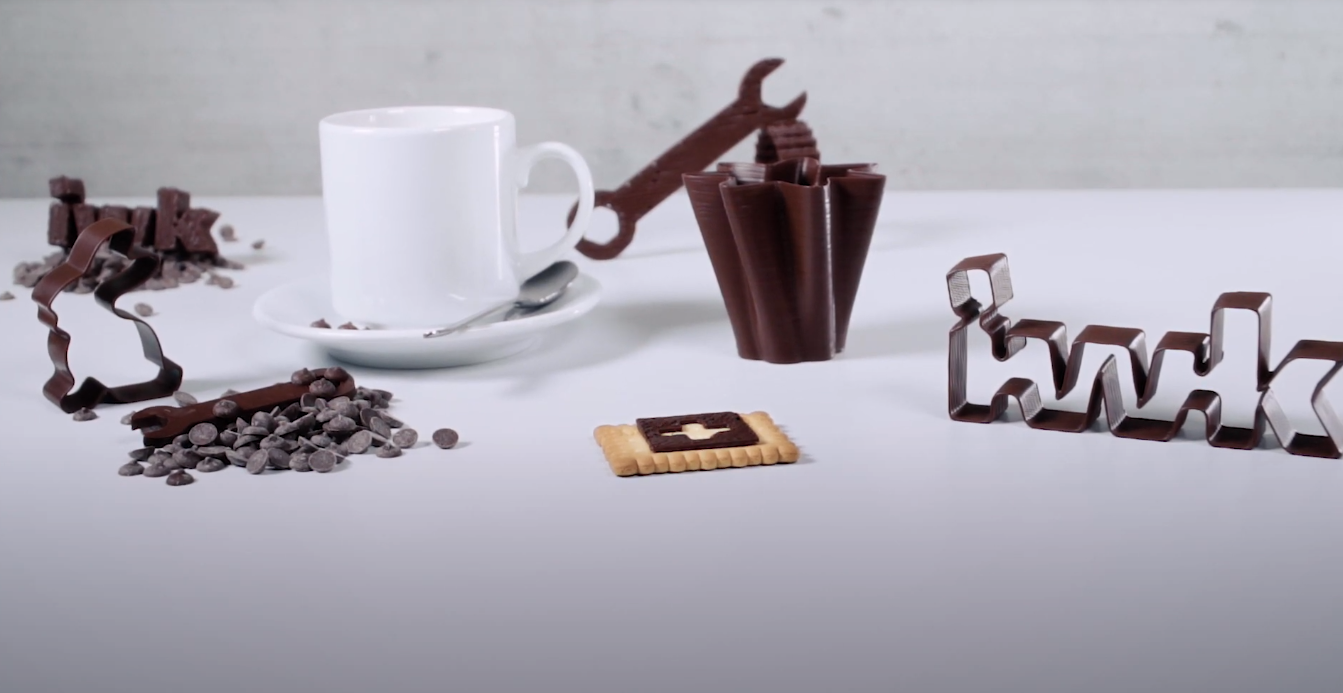 Who doesn’t love chocolate? So imagine gifting your friends and family chocolates customized just for them. They would LOVE you.
Who doesn’t love chocolate? So imagine gifting your friends and family chocolates customized just for them. They would LOVE you.
That’s the magic of chocolate 3D printing.
What is chocolate 3D printing?
Chocolate 3D printing involves printing any chocolate in a highly customized, low volume, and intricately detailed way.
Those completely new to the world of 3D printing may ask. What do you mean ‘print chocolate’? That’s such a weird phrase.
Well, welcome to 2022. By printing chocolate, I mean just that – printing chocolate. Like you print designs on a piece of paper. You can make edible chocolate and mold it into any shape that you like, and eat it.
Hell yeah, the Future is the shizz!
Benefits of 3D Printing Chocolate
You Get to Eat Friggin Chocolate
I mean, do I need to spell it out? You get to make and eat your own chocolate. Whenever and forever.
Just keep an eye on your waistline.
Make Something that Tastes Good, Look Good
Chocolate is great to taste, but it’s somewhat average in the looks department. But not anymore.
With the advent of chocolate 3D printing, you can create complex chocolate designs. Traditionally, this can’t be done using your hands or any other methods.
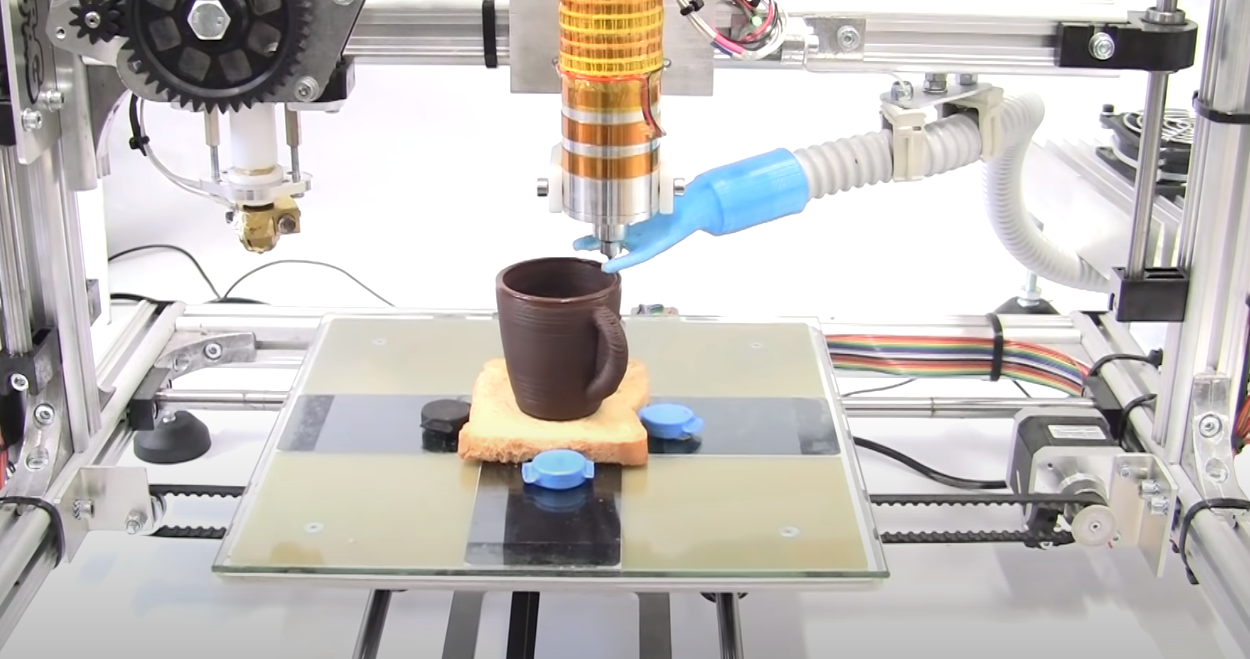
The best part about owning a printer is that you can make chocolate for any occasion. Is it Christmas? Then make a chocolate Christmas tree. Easter? Then an Easter egg. Halloween? Then a chocolate pumpkin. You get the point.
Limitations of 3D Printing Chocolate
Cannot Mass Produce Chocolate
Want to call your whole neighborhood to show off your new chocolate printer and seduce them with chocolate?
Unfortunately, chocolate can’t be mass-produced, and it’s one of the biggest limitations of these printers.
Time Consuming
With chocolate 3D printing, your tummy might get impatient: that’s because printing chocolate is a slow affair.
This is why chocolate can’t be mass-produced.
One of the reasons for this is that melted chocolate doesn’t harden quickly at room temperature. This can cause the print to lose its form due to gravity.
That means the prints need to be printed a layer at a time, slowly, to prevent printing failures.
How Does Chocolate 3D Printing Work?
The fundamentals of standard plastic 3D printing and chocolate 3D printing are the same. It’s just that instead of plastic filaments, chocolate is used as the printing material.
Melted Chocolate is added a layer at a time to create a final delectable chocolate print. This chocolate then cools to become a solid piece.
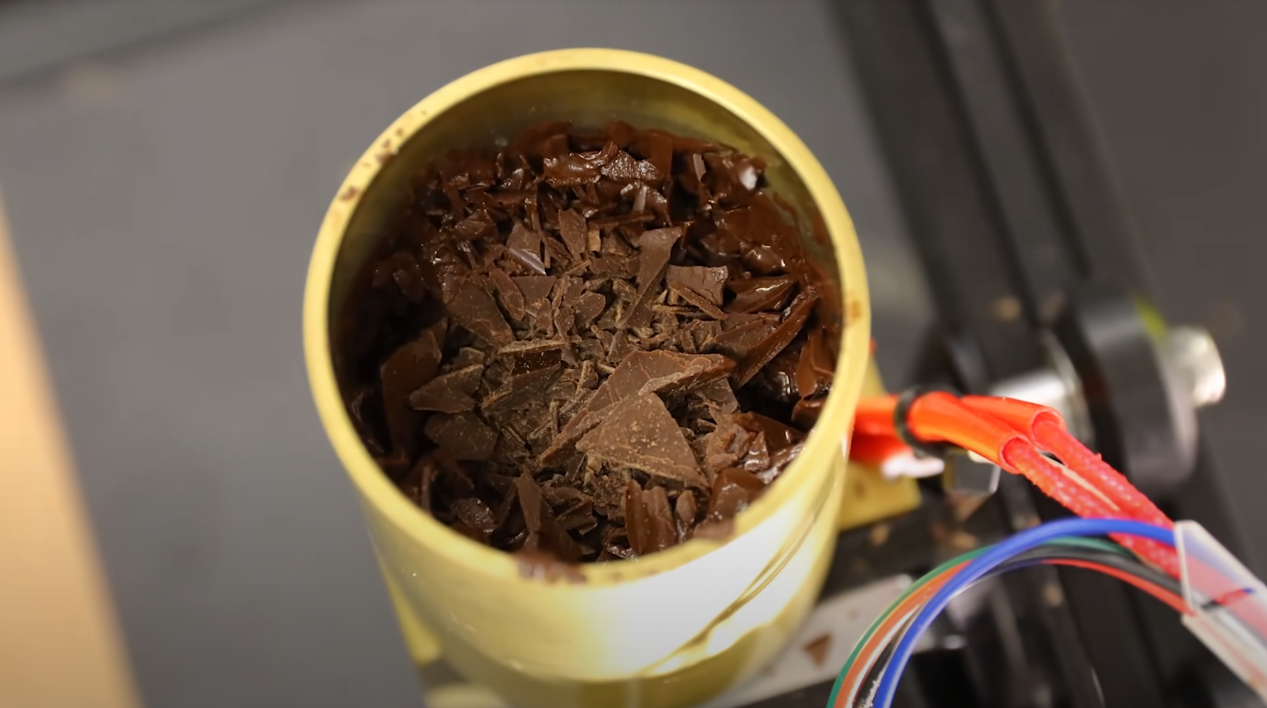
For those with experience in regular 3D printing, you can use the same 3D printing file types and software you’re familiar with.
Chocolate VS Plastic 3D Printing
Chocolate 3D printing is harder to carry out than plastic 3D printing.
Like I mentioned before, melted chocolate has a harder time hardening at room temperature. On the other hand, plastic does so easily
And unlike plastic 3D printing, you need to heat the chocolate 3D printer before printing. Otherwise, the chocolate can harden inside the printer.
In chocolate 3D printing, there are different types of chocolate like milk, dark, white, etc. Each of them differs in viscosity and other properties. Hence, different printing speeds and temperature settings would be required for each of them.
How Much Does a Chocolate 3D Printer Cost?
A chocolate 3D printer is expensive. The cheapest one in this article costs around $1500. Premium ones cost around 5000$.
Why does the price vary so much? Because various factors like maximum print area, resolution, quality of print, chocolate filament refills affect the price.
Top 3D Chocolate Printers At A Glance
If you’re anything like me, you’d be eager to print chocolate as fast as possible. For this reason, if print speed is a priority to you, the Mmuse Delta is the fastest chocolate printer on this list.
Printing speeds vary between 150 mm/s – 300 mm/s. If there was ever a chocolate 3D printing race, and the prize money was a million dollars, this would be the printer to buy.
Other than chocolate, this printer can also print pancakes, candy, and tomato sauce. It comes fully assembled out of the box, and you can start printing a few minutes of unpacking the printer.
The printer is also super light. So it makes for a great travel companion.
The Mmuse Touchscreen is a pricier printer from the same company. Made of aluminum, it looks incredibly cool – much cooler than its sibling, the Delta.
The touchscreen is gorgeous. The interface is intuitive, and printing is easy. You can 3D print via WiFi, USD, or SD card.
A unique feature of the Mmuse Touchscreen is the ‘intelligent temperature control technology’. With the help of this fancy-sounding tech, the right temperature is chosen automatically so that the prints turn out smooth without issues.
With all these neat features, the price is also equivalently high. Compared to the Delta, it is five times pricier.
The quality of the prints in the Touchscreen version is far superior to the Delta version.
If you’d like the finest chocolate print, then I highly recommend the Touchscreen.
If you don’t care about quality and would rather have fast prints, then the Delta is the best option. After all chocolate tastes the same, no matter how it looks.
The Mycusini is small, can fit on your kitchen countertop/cabinet. It’s also easy to use, your 3-year-old can become a chocolatier overnight.
The refills are filled with melted chocolate which comes plastic-wrapped in a log-shaped appearance.
Preparation is simple. Chop this refill into half and add it to the cartridge. The machine then heats the chocolate in a uniform manner, outside-in, to ensure that the texture is uniform and the chocolate extrudes evenly.
Finally, printing the chocolate is a straightforward affair. You just need to push a few buttons and the item is 3D printed. Final prints are also consistent and accurate.

Just make sure you have tons of paper towels next to you; chocolate 3D printing is a messy endeavor.
The second coolest feature of this food 3D printer (the first being the fact that you can print chocolate!) is the Mycusini club software. It allows you to create any print design you like.
For example, you can handwrite your name, or you can draw cool 2D shapes and designs. STL files can be uploaded and 3D printed as well (for those unfamiliar with an STL file, it’s a file used by standard 3D printers that contain the design to be printed).
Thingiverse is a fantastic site to find print models of all types like cars or action figures. You can finally get to eat and enjoy your favorite superheroes!(if funny thoughts crossed your head, get it out of the gutter!)
A major gripe I had with this food 3D printer was that chocolate ran out halfway. If this happens, there is no way to resume printing. Everything had to be redone from scratch. This led to a lot of wastage.
The second complaint I had was about the noise the food 3D printer made. It was annoying: I couldn’t get myself to do any work next to the printer.
But don’t let my nitpicking discourage you; you should get this food 3D printer if you’re an ardent fan of chocolate.
Foodbot D2, R2-D2’s lesser-known chocolate-making brother, is a versatile printer, capable of printing more than just chocolate. You can also print ingredients like toffee, jam, biscuits, and pizza as well!
The machine looks futuristic. It’s a head-turner with its solid, sheet metal frames. These frames add stability to the machine during printing, which means you get accurate prints. The excellent 5.2-inch touchscreen also adds to the machine’s charm.
A unique feature that separates this printer from others in the list is its dual extrusion. With single extrusion printers, you can only print one material at a time.
With dual extrusion, you can mix and match two ingredients. Therefore, instead of just chocolate, you can make chocolate pizza (before anyone barfs at the idea, let me tell you, I’ve had it, and it tastes freakin great!).
The dual extrusion feature is also the main distinguishing factor from its sibling, the Foodbot S2. The Foodbot S2 has just a single extruder.
Another distinguishing feature is that the print speeds of the D2 are 25-50 mm/s, whereas that of the S2 is 15-70 mm/s.
Ease of use is similar in both the printers.
The D2 and the S2 are some of the best chocolate printers in the current market. The price matches the class as well, so be ready to shell out money for these printers.
The ZMorph VX is nothing short of an engineering marvel. It’s the King of 3D Printing Multitasking. It can 3D print, CNC machine, laser engrave, and foodprint.
But let’s just stick to the chocolate printing aspects for now.
To print chocolate you would need to purchase the Thick Paste Extruder. It costs around $249.
With the help of the extruder, this 3-in-1 3D printer can print ingredients like chocolate, cream cheese, cookie dough, frosting, and much more. The extruder includes a syringe powered by a stepper motor.
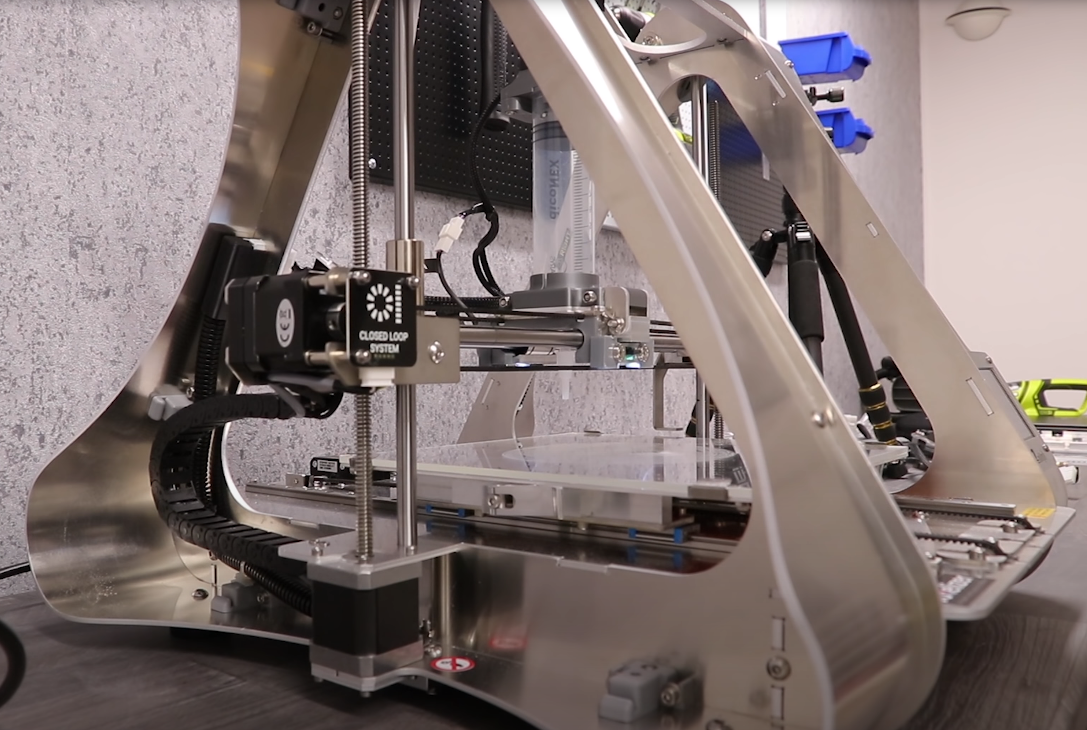
The prints turn out accurate and precise.
The ZMorph does not certify that foods extruded from the thick paste extruder are eatable, so this is best left for home use only.
If you do plan to use ingredients of your own, make sure to make the paste entirely homogeneous. Otherwise, the nozzle might clog up.
The main selling feature for the ZMorph is of course its all-in-one appeal. So definitely get this printer if you want the option to 3D print food while still being able to print with regular filament.
Any veteran 3D printers here in your audience? If you’ve been rolling your eyes at the prices mentioned so far, you’re in luck. You can customize your own printer into a choco printer thanks to ChocoL3D kit.
The kit is made by a single person who lives in Ukraine. It consists of a stepper motor, heater cartridge, a bunch of nozzles, thermistors, and screws. The components are designed to fit well with each other.
Setup is straightforward if you’ve had experience installing a hot end or extruder before.
You need to change the slicer settings specifically for chocolate, but luckily there is a video tutorial on their website.
While you can use any chocolate type, it’s best to stick to chocolates that have vegetable fats (unnatural chocolate) instead of cacao fats(natural chocolate). This is recommended by the kit maker.
If you use the wrong type of chocolate, often the prints end up very messy and inaccurate.
Even with the unnatural chocolate, you may face issues with printing. This is not the case for simple, straightforward prints but the case with more complex prints. You need to play around with speed and other settings to get a perfect print.
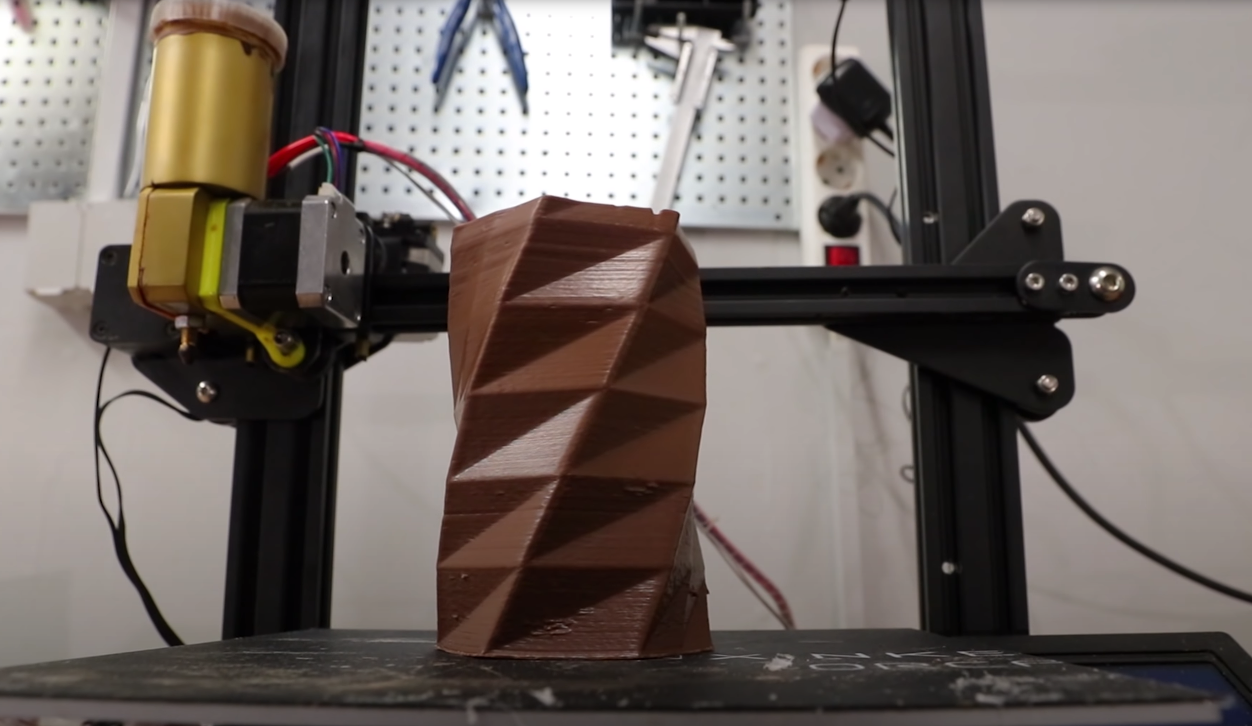
If you have any issues you can always get in touch with ChocoL3D through Facebook (the dude is responsive).



